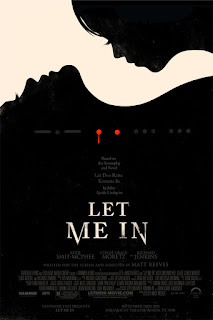J - HORROR
Some films start out in their original country and go on to be a mainstream film. Often American film directors see the fresh fear and decide to jump on it and pump it up with some famous actors, more blood and more scares.
Onryo is a Japanese word used to describe the vengeance in a female ghost who was wronged in life by a man.
Yurei is a Japanese term used to describe a vengeful spirit (male or female) who was murdered before their time or felt a strong emotion during/ just before their death.
Onryo/Yurei's are often potrayed with long black unkept hair, in white clothing with white faces.
RING (1998) vs THE RING (2002)
Ring 1998 is a Japanese psychological thriller directed by Hideo Nakata. It follows the idea of a cursed tape that kills its viewers after a set amount of time. The villain is a Onryo/Yurei named Sadako, a japanese spirit that was prevented from the afterlife (from a premature murder or from possessing strong emotions). They are the only kind in Japanese Folklore that can physically hurt the living. In this version, there is no depiction of the ghost until the end. The noises heard on the tape are just noises and the imagery is just a mixture of disturbing pictures. The phonecall too is just the noises from the tape. It is only in the last murder in the film that the audience see's it's monster in action (although we do see her corpse it is not the spirit there).
The Ring 2002 is the western remake. It has all the same elements as its Japanese predecessor but with added embellishments. We are shown how the people are killed in this version, in this one the girls name is Samara and she is a malevolent spirit who in life had the power to burn images into peoples minds. The western version takes from the last murder shown in the japanese version (a girl crawling out of a well scaring a man to death) and adds it into the back story of Samara. Both girl spirits were tortured in both versions, in the japanese version Sadaku is killed by her father, in the american version Samara is killed by her adopted mother (and thrown down a well.. for 7 days.. explaining the whole 7 day reasoning from the Japanese film). The tape is followed up by a voice call in this version.
Overall the 2002 version seeks to give the Audience more fulfilment, in the 1998 version no attempt to calm the girls spirit is made, no real explanation behind why the tape was made and the viewers are held in suspense much more (the tape has no human voices in the 1998 version). This is probably because Japanese audiences don't require a backstory for a revengeful spirit, whereas American audiences need reasoning behind everything. WHY was she doing it, HOW can we help her, HOW do we stop her coming after us, WHERE does she come from.
THE GRUDGE
After the success of the westernisation of The Ring, remaking Japanese films got it's own name. "J-Horror". The Grudge is another example of this.
JU-ON: The Grudge (2002) is a Japanese supernatural horror film. It is another film jumping on the fears of Japanese folklore, again with a Onryo/Yurei seeking vengeance for her wrongful murder (at the hands of her husband who also murdered the family). It plays heavily on that Japanese Archetype of a Onryo/Yurei, being unrelenting and unstoppable. In this version everyone who enters the house of the murdered family is eventually murdered by the Yurei of the mother.
The Grudge (2004) is the western version of the film. It has the same director as the JU-ON version. Unlike some J-Horror films, The Grudge is set in the same country as the original (Tokyo, Japan) and still makes some cultural reference to what kind of ghost it is (rather than in average american horrors it just being a poltergeist). It's plotline is very similar to it's original, leaving one woman at the end to be the final girl in this (Karen) as opposed to the 2002 version where Rika (the Japanese version of Karen) is brutally murdered by the Yurei mother whilst watched by her ghost friends.
The difference between the two again is the 2004 version seeking to give the audience some sense of redemption for the deaths, gifting them the chance to stop the curse (Karen sets the haunted house on fire.. but it survives.. of course). She gets to be the final girl and watch all her friends die, but in the end we know that she too will be killed.
CONCLUSIVE THOUGHTS.
At this point a conclusion can be drawn that American audiences love a hero, they love shreds of hope to hold onto and they need every option to be explored before their final girl can be killed. The Ring 2002 shows us this as Samara's whole backstory is explored and the woman makes an attempt to put her soul to rest before resulting to passing the curse on, unlike the 1998 version where they just figure out how to pass the curse on and thats kind of it. The Grudge shows us this too, rather than straight out killing the final girl character as the 2002 version does (With Rita.. who experiences lots of violent and horrific encounters before slowly being hunted down by her ghost friends and the murdering Yurei) Karen gets the chance to try and stop the curse by burning the house down, because come on thats what we would all try and do in that situation. The American Audience can then be satisfied that everything to stop this curse has been attempted and when we see that the Yurei mother has come for Karen, we accept it.


















